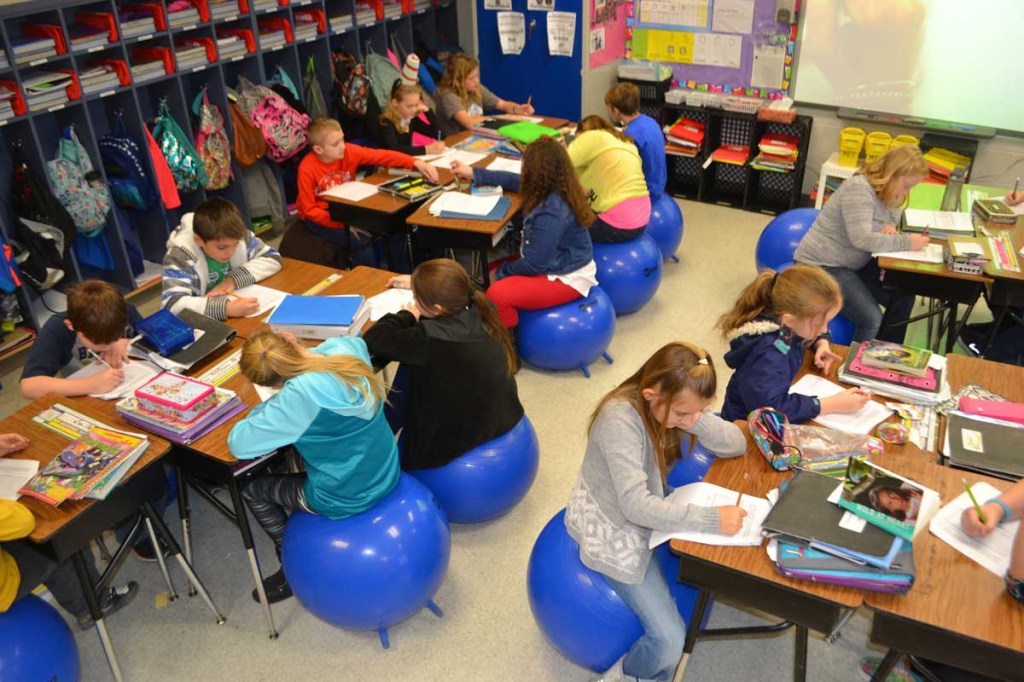Ky. teacher replaces traditional chairs, brings bouncy seats to elementary classroom
Published 1:00 pm Monday, March 7, 2016

- Bouncy seats
SOUTH SHORE, Ky. — There’s no such thing as perfect silence in April Spradlin’s fourth-grade classroom in eastern Kentucky.
And the kids never sit perfectly still, either.
Instead, they bob gently up and down, some faster and some slower, in a loose rhythm reminiscent of waves rippling on the surface of the sea.
Yet the children are focused on their work; when Spradlin demonstrates a math problem on the overhead projector, 24 faces watch intently and then turn to their own notebooks to do the calculation themselves.
Each of the 24 children is sitting on a soft blue plastic ball about 18 inches in diameter. There are a few chairs in the room but no one sits on them, unless one of the kids is in trouble.
Spradlin introduced the balls into her classroom at McKell Elementary School about two weeks ago and since then her students have decided they never want to go back to old-fashioned chairs with the hard seats and backs.
Spradlin’s introduction of new bouncy seats is just one of the ways teachers nationwide are attempting to adopt and implement new methods to increase student concentration and engagement in the classroom.
The balls are marketed as balance, stability or yoga balls. Spradlin said research has shown the balls to improve balance and core muscles. Research studies involving students in the U.S. also showed lower instances of ADHD and hyperactivity linked to the unique seating choice.
Because they require the sitter to maintain balance, they stimulate the brain and thus make the sitter more receptive to learning, she said.
She hasn’t had them long enough to accumulate data of her own, but Spradlin has seen some changes in her classroom since bringing in the balls.
Among them, fidgety students are a bit less fidgety. Bobbing and rocking gently on the balls “gets the wiggles out,” she said. Also, kids stay at their seats and are less likely to get up without permission.
The shuffling of feet and the chirping of plastic against the tile floor produces a constant, soft rumbling noise; Spradlin sometimes has to raise her voice to be heard over the sound but doesn’t find it to be a major disadvantage.
Every so often, she allows a short jumping session so the kids can burn off some energy.
Other times, students are expected to keep the balls firmly on the floor or face loss of ball-sitting privileges.
There are other rules too: two feet on the floor, no sharp objects near the ball, no bouncing when she is out of the room, two inches maximum bounce at any time, no beating on the ball like a drum.
Only a couple of children have lost their ball privileges for the day, she said.
A teaching colleague introduced her to the concept and Spradlin applied for a grant through Area Education Grants; she filed the application on the donorschoose.org crowdfunding site and received the full amount she needed to order 26 balls.
Among the donors were parents and grandparents, some of whom are considering getting balance balls for their own homes.
The balls are often used by physical and occupational therapists to develop large motor skills, she said.
James writes for the Ashland, Kentucky Daily Independent.

